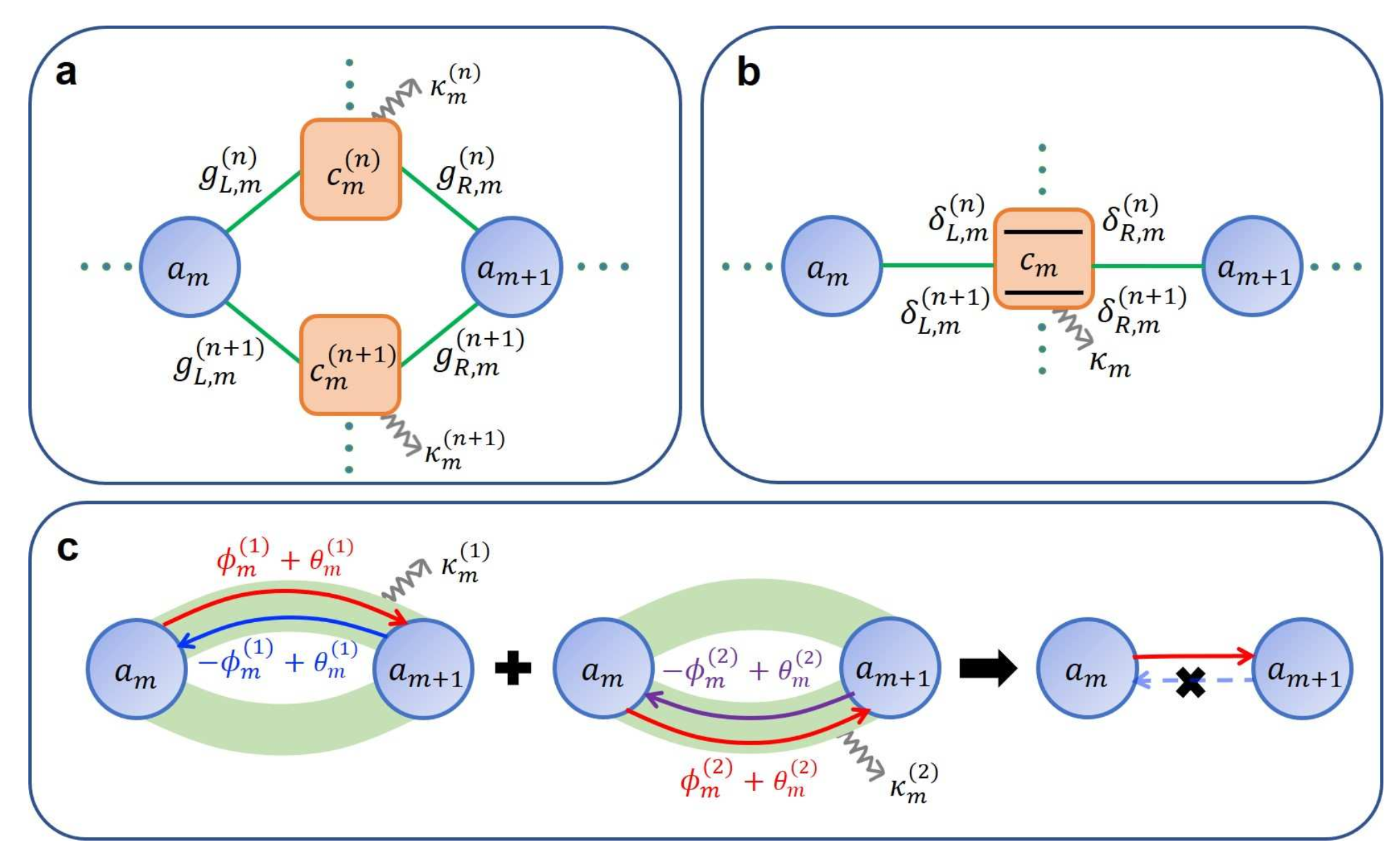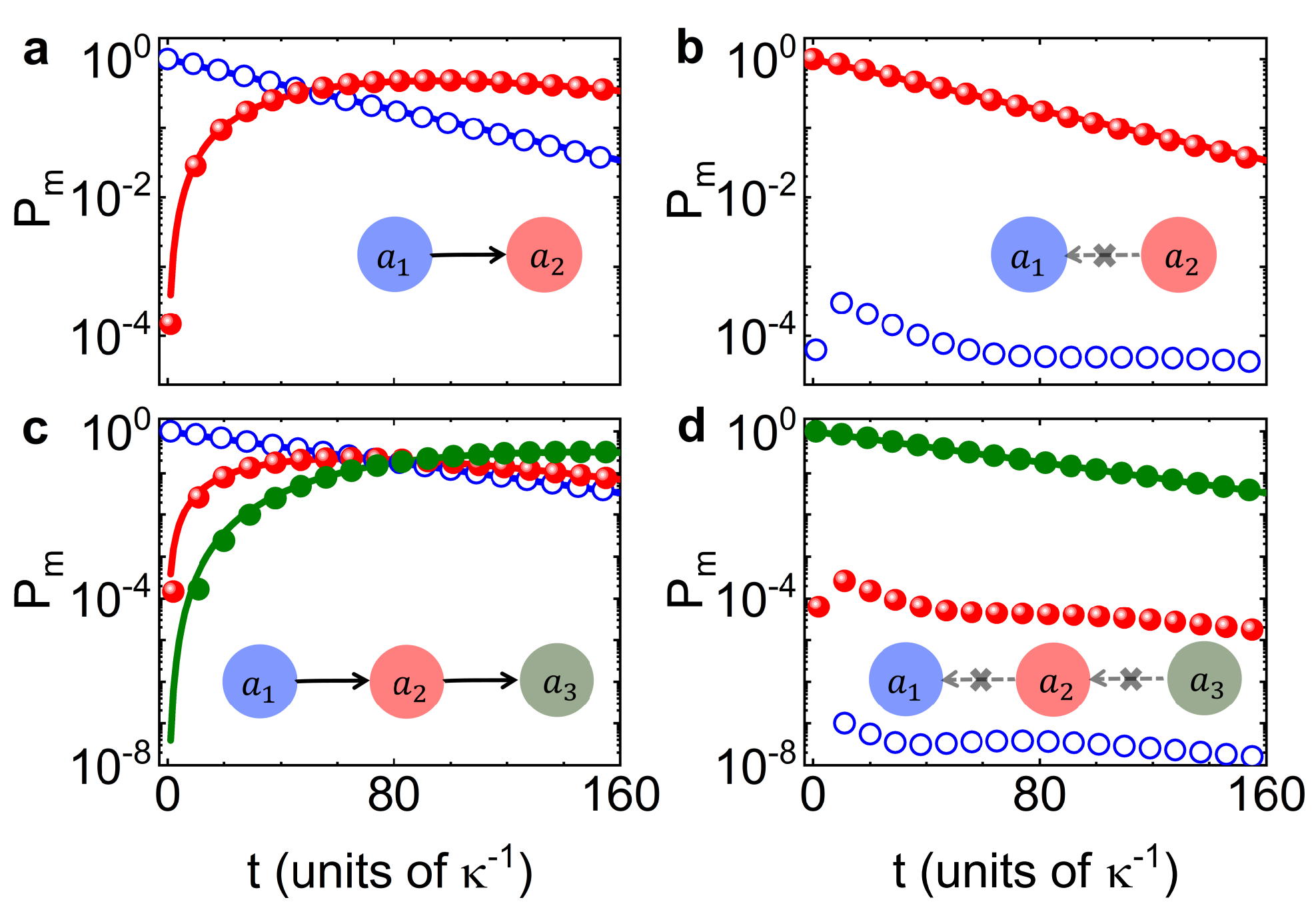Recently, a research team led by Prof. Yong-Chun Liu at Department of Physics, Tsinghua University, proposed a new principle to realize nonreciprocity by using energy loss. The phase lag induced by loss, which is independent of the energy propagation direction, results in different interference outcomes for forward and backward directions, giving rise to nonreciprocity and unidirectional energy transmission. The work paves the way for the design of nonreciprocal devices and the study of topological properties in lossy systems, without stringent requirements. This work has been published in Light: Science and Applications with the title “Loss Induced Nonreciprocity”.
Optical nonreciprocity, which prohibits the light field returning along the original path after passing through the optical system in one direction, is of crucial importance for both fundamental studies and applied sciences. Realizing nonreciprocity is difficult as it requires breaking of the Lorentz reciprocity theorem. Most of the existing approaches to realize nonreciprocity can be grouped into three categories with the following requirements: (i) magnetic field induced breaking of time-reversal asymmetry, (ii) spatiotemporal modulation of system permittivity; (iii) nonlinearity. However, these principles either meets difficulties for integration, or requires stringent experimental conditions, or has limited performances.

Fig. 1 Schematic description of the scheme. (a) Sketch of a system with an array of main resonance modes connected via a series of connecting modes. (b) Sketch of a multichannel coupled system with synthetic frequency dimensions. (c) Illustration of multichannel interference for realizing nonreciprocity. By tuning the phases, constructive (destructive) interference can be achieved for the forward (backward) coupling, giving rise to nonreciprocity and unidirectional energy transmission.
In this manuscript, the research team propose a new principle to break the Lorentz reciprocity theorem by going beyond the existing three categories of approaches. The idea is using loss to induce nonreciprocity. The loss in a resonance mode induces a phase lag, which is independent of the energy transmission direction. As illustrated in Fig. 1, by combining multichannel lossy resonance modes, the interference gives rise to nonreciprocity, with different coupling strength for forward and backward directions. The unidirectional nonreciprocal coupling directly gives rise to the unidirectional energy transmission between the main resonance modes. [Fig. 2]. The model is universal and can be applied to a variety of systems, such as optical cavities and waveguides, mechanical resonators, as well as superconducting circuits.

Fig. 2 Unidirectional energy transmission for two mode (a-b) and three mode (c-d) cases.
The first author of the paper is postdoctoral researcher Xinyao Huang from Department of Physics, Tsinghua University. The corresponding author is associate Prof. Yong-Chun Liu, who conceived the idea and supervised this project. This work is supported by the Key-Area Research and Development Program of Guangdong Province, the National Natural Science Foundation of China (NSFC), the National Key R&D Program of China, and the China Postdoctoral Science Foundation.
Research link: https://www.nature.com/articles/s41377-021-00464-2